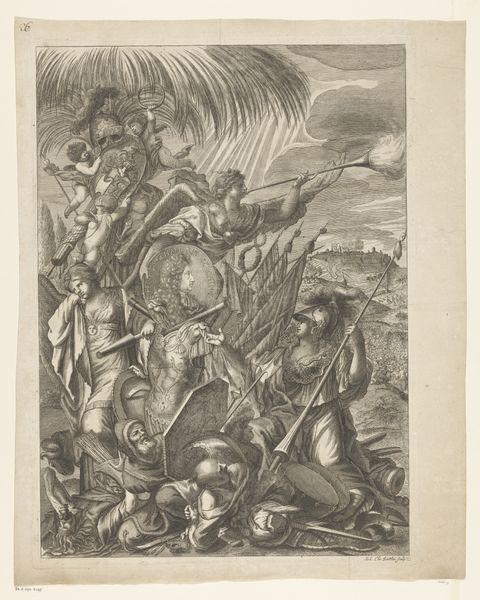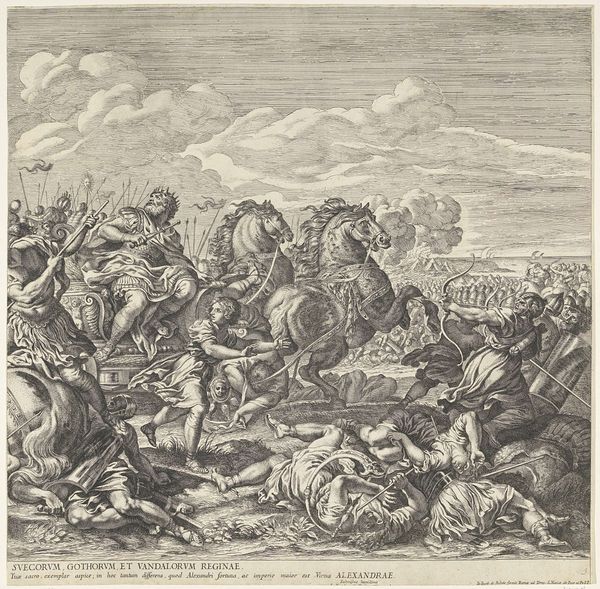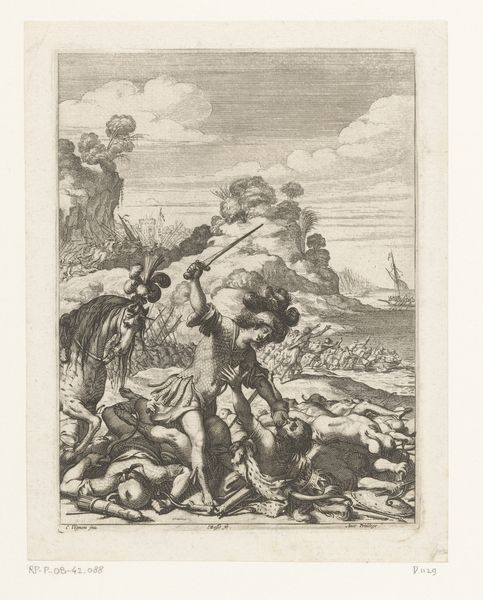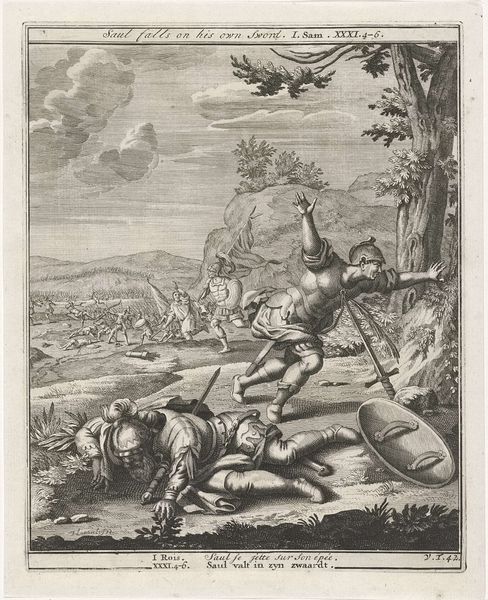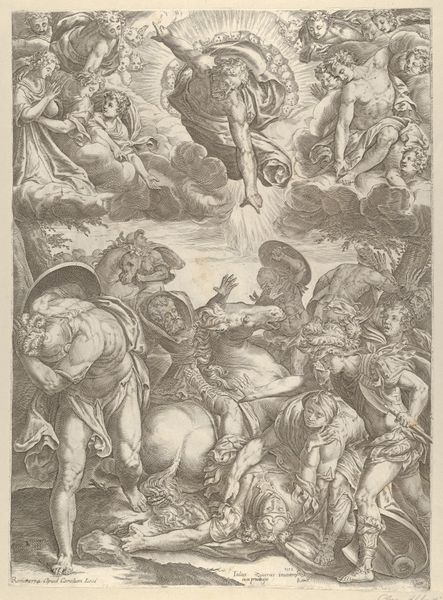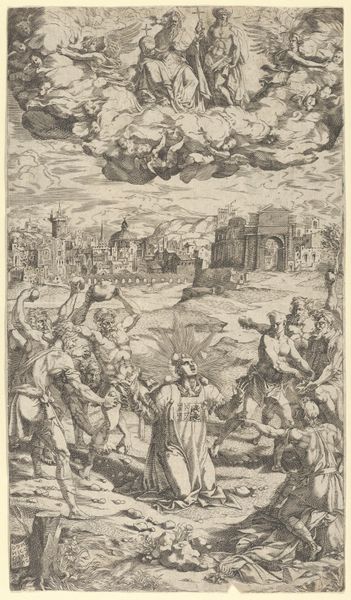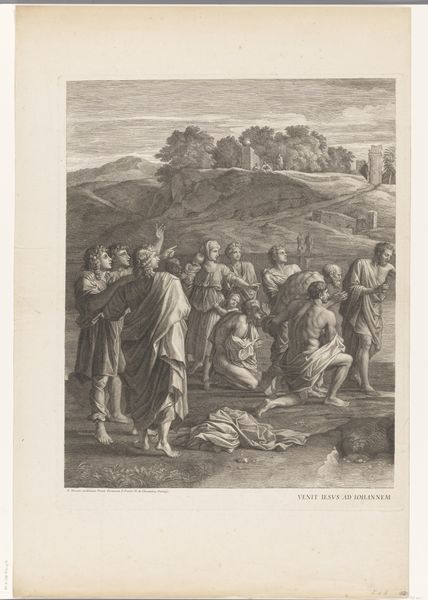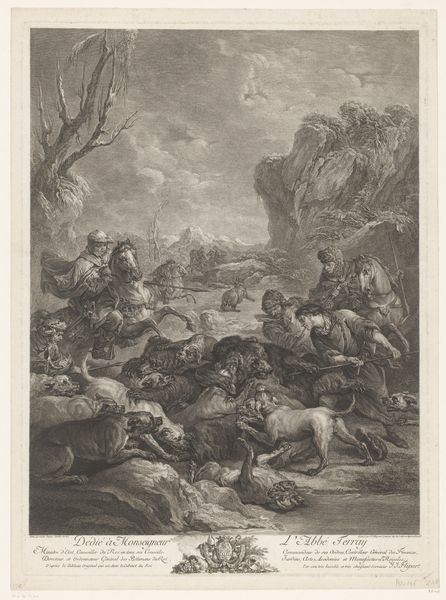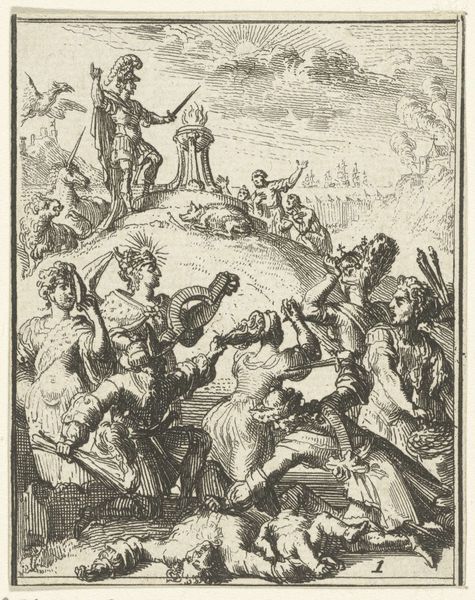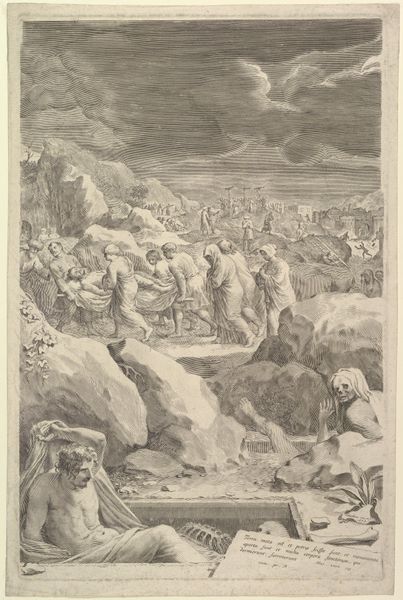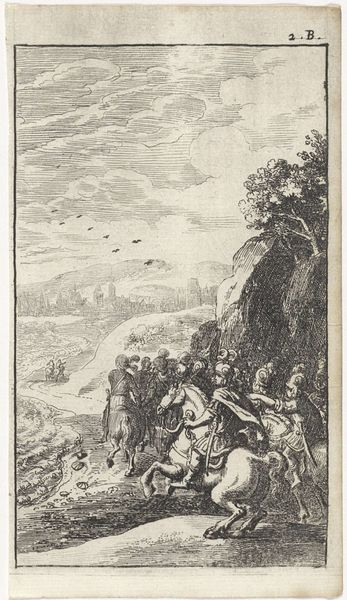
print, engraving
#
baroque
# print
#
old engraving style
#
landscape
#
figuration
#
history-painting
#
engraving
Dimensions: height 304 mm, width 200 mm
Copyright: Rijks Museum: Open Domain
Editor: This engraving, titled "Prediking van Johannes de Doper," or "The Preaching of John the Baptist," was created sometime between 1649 and 1681 by François Spierre and now resides in the Rijksmuseum. The scene feels quite theatrical, almost staged. How do you interpret this work, especially considering the period it was made? Curator: Well, seeing as it’s from the Baroque period, that sense of drama is deliberate. It was a time when the Church was very concerned about its public image during the Counter-Reformation. So how would that impact how an artist like Spierre might approach a scene like John the Baptist preaching? Editor: I guess I hadn’t considered that angle. Maybe it's less about capturing a "real" moment and more about projecting a certain image of religious authority and impact. The way John is elevated above the crowd... Curator: Exactly! And look at the landscape, almost like a backdrop. Baroque art was often about using imagery to persuade. These prints would circulate widely, bringing that carefully crafted message to the public. It served a crucial purpose beyond simple religious depiction. It also highlights the church’s concern for maintaining societal power dynamics and order. Editor: That’s a fascinating point. So, beyond the immediate religious narrative, the print also comments on the societal role of the Church at the time? Curator: Precisely. The "theatrical" feeling you picked up on is directly related to that. How powerful images were employed by institutions during a pivotal era. It encourages us to think about who is being represented and why. Editor: I'll definitely consider the social implications when looking at art from this period going forward. Curator: Indeed, an image can carry more than its aesthetic or narrative weight, it mirrors the anxieties, ambitions and structure of the culture that creates it.
Comments
No comments
Be the first to comment and join the conversation on the ultimate creative platform.
